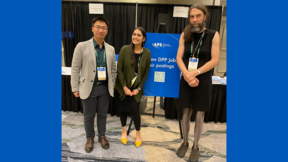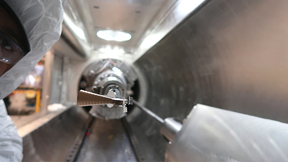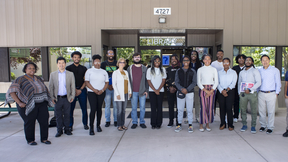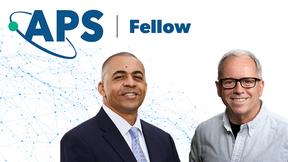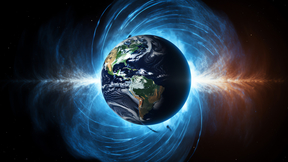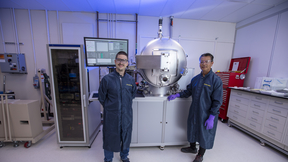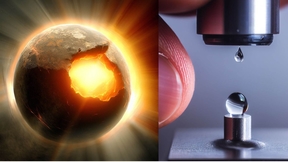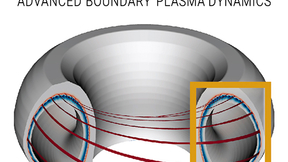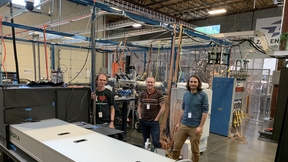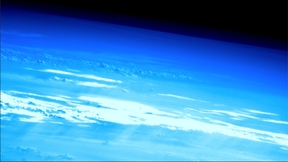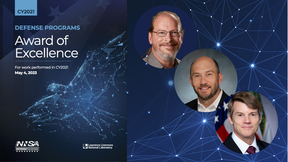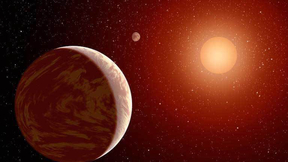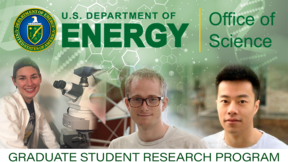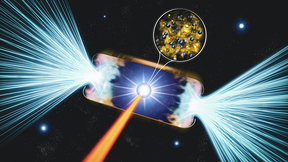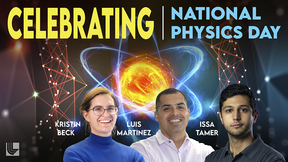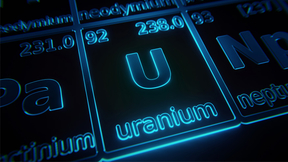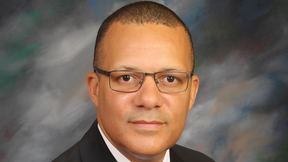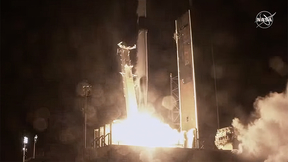Back
Physics
Two LLNL Physicists named American Physical Society Career Mentoring Fellows
PLS staff physicists Ben Zhu and Veronika Kruse were selected by the American Physical Society (APS) as Career Mentoring Fellows for 2023-2024. Ben belongs to PLS’s Fusion Sciences program and Veronika is in the High Energy Density Science section. Part of their duties involve attending selected APS conferences such as the Division of Plasma Physics (DPP) meeting,…
Resolving astronomical mysteries
A new satellite called XRISM (X-ray Imaging and Spectroscopy Mission, pronounced “crism”) was successfully launched from the Tanegashima Space Center in Japan on Sep. 7, 2023. XRISM is a collaboration between the Japan Aerospace Exploration Agency (JAXA) and National Aeronautics and Space Administration (NASA), with European Space Agency participation, to study extreme…
Probing the temperature of materials under extreme pressure
In new experiments at Lawrence Livermore National Laboratory’s National Ignition Facility, scientists measured the extended X-ray absorption fine structure (EXAFS) of copper to probe its temperature under extreme pressure. The research appears in the journal Nature Communications. Dynamic compression experiments at high-energy-density laser facilities have expanded the…
LLNL hosts HBCU students, faculty to build new pipeline of talent
For the second consecutive year, Lawrence Livermore National Laboratory (LLNL) hosted a group of student scholars and faculty members from Historically Black Colleges and Universities (HBCUs) on a recent five-day visit. LLNL’s goal is to develop the next wave of summer interns — and to build a strong pipeline of talent — from historically marginalized groups in science,…
Two LLNL scientists selected as 2023 American Physical Society fellows
Lawrence Livermore National Laboratory (LLNL) scientists Manyalibo “Ibo” Matthews and Frank Graziani have been named 2023 American Physical Society (APS) fellows. Matthews was selected from the Forum in Industrial and Applied Physics unit “for pioneering research in optimizing metal 3D printing and laser materials processing.” Frank Graziani was chosen from the Division of…
Journey to the center of the earth: exploring iron’s equation of state
A typical high-school science class teaches that Earth’s core is comprised of two parts: an inner core that is composed mainly of solid iron and an outer core that is composed mainly of molten, liquid iron. Although this is common knowledge, the location of the boundary between the solid inner core and liquid outer core, as well as many other facets of Earth’s deep…
In a first, LLNL researchers create birefringent all-glass metasurface
Lawrence Livermore National Laboratory (LLNL) researchers have adapted their novel metasurface process, which creates a thin layer on the surface of an optic, to create an all-glass metasurface with birefringence, or dual refraction, properties. This achievement could transform waveplate technology for high-power laser systems such as the National Ignition Facility (NIF)…
Matter at extremes: a question of scale
Scaling laws are like a secret code used across science to break down complex phenomena into simple mathematical expressions. These equations help us to understand how one factor in a system relates to other factors that determine the system’s behavior. For example, Kleiber’s Law, one of the best-known scaling laws, observes that metabolic rates of many organisms — from…
LLNL-led project to advance understanding of plasma dynamics for future fusion power plants
A Lawrence Livermore National Laboratory-led project aimed at using computing tools to improve understanding of fusion plasma dynamics was among 12 projects recently awarded funding by the Department of Energy (DOE) to accelerate fusion power plant development. The four-year, multi-institutional Advanced Boundary Plasma Dynamics (ABOUND) project will receive $9.25 million…
LLNL develops portable Thomson scattering diagnostic to support ARPA-E’s fusion energy ventures
Scientists at Lawrence Livermore National Laboratory (LLNL) collaborated with University of California San Diego (UCSD) to design, assemble, and field a portable optical Thomson scattering diagnostic system for the Advanced Research Projects Agency-Energy (ARPA-E) — a Department of Energy agency which supports private companies that are developing new ways to generate,…
Iron monoxide in Earth’s deep interior
Iron monoxide (FeO), also known as wüstite in its mineral form, is a significant (even if not predominant) component of Earth’s core and the deep interior of Earth and other planets. Most notably, FeO exhibits a richness of condensed-matter phenomena, including crystal-structural phase transformations and melting, electronic transitions, and spin-state transitions that…
LLNL’s prototype telescope now fully operational aboard the International Space Station
When SpaceX’s Dragon spacecraft docked with the International Space Station (ISS) on March 16, it delivered several thousand pounds of supplies for the crew as well as new hardware. The hardware included the U.S. Space Force’s Space Test Program Houston 9 (STP-H9) platform, which houses a prototype telescope designed and built by Lawrence Livermore National Laboratory's…
Defense Programs Awards of Excellence recognize innovation and achievements in 2021
In virtual ceremonies held May 4 and June 26, Marvin Adams, deputy administrator for Defense Programs at the National Nuclear Security Administration (NNSA), honored individuals and teams at Lawrence Livermore National Laboratory (LLNL) and partner sites for their outstanding contributions to nuclear security. The Defense Programs Awards of Excellence recognition events…
New NIF experimental platform will probe warm dense matter
To learn about the properties of materials under changing temperatures and pressures, researchers typically combine laboratory experiments with theoretical models and computer simulations. It’s an iterative process: The models help in designing the experiments and interpreting the results, and the results “constrain,” or fine-tune, the models so they can effectively guide…
Three graduate students earn awards to work at Lawrence Livermore
Three graduate students have earned Department of Energy Office of Science Graduate Student Research (SCGSR) Program awards to perform their doctoral dissertation research at Lawrence Livermore National Laboratory (LLNL). They are three among the 87 graduate students representing 33 states for the SCGSR program’s 2022 Solicitation 2 cycle. Through world-class training and…
Experiments shed light on pressure-driven ionization in giant planets and stars
Scientists have conducted laboratory experiments at Lawrence Livermore National Laboratory (LLNL) that provide new insights on the complex process of pressure-driven ionization in giant planets and stars. Their research, published today in Nature, unveils the material properties and behavior of matter under extreme compression, offering important implications for…
LLNL celebrates National Physics Day
Lawrence Livermore National Laboratory (LLNL) is celebrating National Physics Day (April 24) by highlighting just a few of the thousands of physicists that work at the Lab. Physics is a scientific practice that seeks to understand the way the universe behaves by examining properties of matter and energy. Representing a cross-section of the broad scope of focus areas and…
Investigating uranium’s high-temperature thermodynamic properties
Uranium metal is a recognized nuclear fuel for sodium fast reactors due to its significant thermal conductivity and high burnup capability, among other beneficial properties. However, metallic uranium-based nuclear fuels undergo physical phenomena that are poorly understood on a fundamental level. These phenomena include gaseous swelling, redistribution of constituents, or…
LLNL’s William Evans to serve on Fannie and John Hertz Foundation board of directors
Lab physicist William Evans has been selected to serve on the board of directors for the Fannie and John Hertz Foundation, a nonprofit organization dedicated to empowering the most promising innovators in science and technology. Evans is the physics division leader in the Physical and Life Sciences Directorate at Lawrence Livermore National Laboratory (LLNL), which works…
Prototype telescope designed by LLNL researchers launched to the International Space Station
A prototype telescope designed and built by Lawrence Livermore National Laboratory (LLNL) researchers has been launched from Cape Canaveral, Fla., to the International Space Station (ISS). Known as the Stellar Occultation Hypertemporal Imaging Payload (SOHIP), the telescope uses LLNL patented-monolithic optics technology on a gimbal to observe and measure atmospheric…


